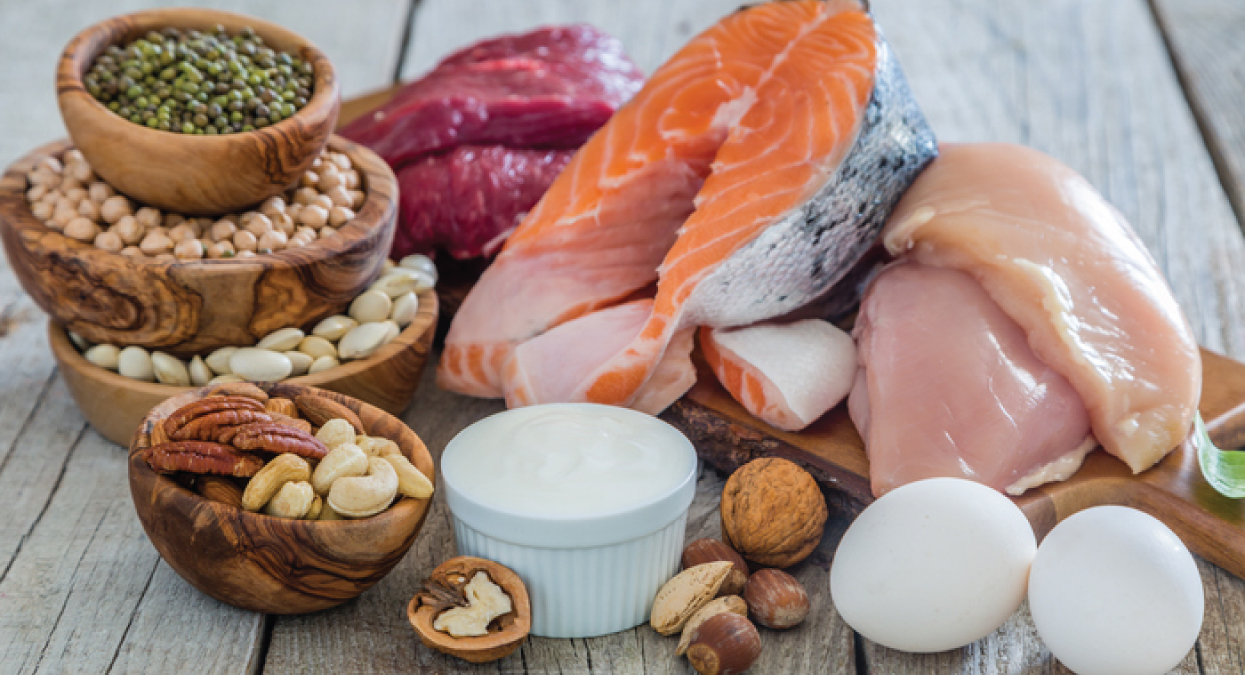How Much Protein Do You Really Need?

This article was originally featured in Brigham Health Hub.
Wolfgang Fitz, MD, orthopaedic surgeon at Brigham and Women’s Hospital and assistant professor at Harvard Medical School
Protein is an essential part of our diets. Protein is the only source of nitrogen that is used to build and repair tissues. A fundamental question in nutrition is: How much protein is needed to sustain life and sustain good health? Moreover, how do our requirements for protein change over our lifetime? In older adults with reduced muscle mass, experts have suggested that a high-protein diet may help to improve muscle function, yet new evidence suggests that high-protein diets may not be as beneficial as some have thought.
Protein is an important component of every cell in the body. It is used to build and repair tissues, and it forms the building blocks of bones, muscles, cartilage, skin, blood, hair, and nails. Protein deficiency, caused when people do not get adequate amounts of protein from their diet, can impact all aspects of body function. Edematous malnutrition is the most severe form of protein deficiency, but is extremely rare in the United States and developed countries. Too much protein in a diet can also have adverse effects on body function. Excessive protein intake has been linked to increased risk of osteoporosis.
Protein is found in a wide variety of foods. The best sources are meats, fish, eggs and dairy products. Some plant foods also are high in protein, including quinoa, broccoli and nuts. The Institute of Medicine recommends that all adults should consume 0.83 grams of protein per kilogram of body weight per day. This amounts to 56 grams per day for the average male and 46 grams per day for the average female. Given that an eight ounce serving of beef contains approximately 61 grams of protein, most people actually consume more than enough protein in their diet without realizing it.
The recommended daily amount of protein was determined based on a short-term study, consisting mostly of young men, with very few women, and even fewer older adults studied—yet the recommendations are given to everyone, of all genders, and all ages, and all races, across the globe. So, what about older adults, who are prone to weaker muscles? Could a diet with more protein than the recommended daily amount, aka a “high-protein” diet, improve their muscle strength? Recent studies suggest notes the recommendation for daily protein intake may not be as precise as one might think.
Shalender Bhasin, MD, of the Section of Men’s Health: Aging and Metabolism at Brigham and Women’s Hospital cautions against regarding the IOM’s recommended daily amount of protein as biblical dictum. “It should really be viewed as a guideline rather than a rule,” he said.
A new study by Dr. Bhasin and his colleagues showed that older men did not increase muscle mass or function from a high-protein diet. He suggests that the recommended daily allowance for protein should be re-evaluated, especially for older adults with frailty and chronic disease. The best way to generate recommendations would be a long-term study, in both men and women, across a range of ages and races, and creating specific recommendations for different groups. Until such studies are done, the recommendation may be best viewed as a suggestion, rather than as minimum requirement.
In the meantime, what should we do to make sure we are getting enough protein in our diets? “Listen to what your grandma always said: eat a balanced diet, rich in fruits, nuts, grains, vegetables, and dairy and meat products,” said Dr. Bhasin. A typical balanced diet, including a vegetarian diet that includes plant-based proteins, has more than enough protein. “As long as you take a common-sense approach to eating meals that are balanced and fresh you don’t need to worry about not getting enough protein—you’re likely getting plenty,” he added.